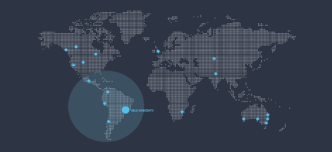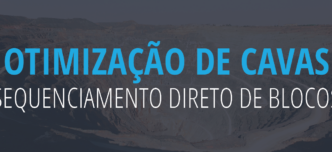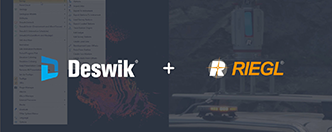Chilean recognition for innovative optimization
Mining is in a state of reinvention. Significant trends are forcing mining operations to be more efficient in their decision making, and the call for the use of more concise assessment methodologies is growing louder. That’s the increasingly complex problem we’ve been working on through our technology partnership, with the University Adolfo Ibáñez in Chile.
The past fifty years has seen numerous advancements in mining optimization methodologies. Powerful computers have allowed research hubs around the world to successfully solve larger and more complex optimization models.
Over the last two years, we’ve worked closely with the Operations Research Group¹ at the University Adolfo Ibáñez (UAI) in Santiago, Chile. That work has focused on developing cutting edge technology to help mine planners deal with the increasingly complex models needed on open pit and underground mines.
The work employs modern and innovative methodologies that go beyond traditional mine planning, towards a multi-period global optimization. The process will integrate with the Deswik.Suite and provide users capabilities to quickly run multiple scenarios. In addition, a set of analytical tools explicitly deals with geological and price uncertainty – thereby minimizing risks and maximizing upsides.
Chilean recognition
Our joint work with UAI was recently recognized, through the awarding of the Chilean National Prize of Technologic Transfer², in a contest organized by CORFO and Red GT during the “VI Encuentro Chile: Ciencia, Tecnologia y Empresa”.
The award highlights the value of partnerships formed between universities and research institutes within various industries. It also recognises how innovative ideas and research have successfully potentialized the local economy and technology base of Chile.
The work of the Operations Research Group at UAI
For more than a decade, the Operations Research Group at UAI has focused on studying and developing specialized optimization tools to solve complex and large mine planning models.
Like commercial solvers (e.g., CPLEX, GUROBI, Xpress, Mosek, etc), these new tools are based on mixed integer linear programming. However, they also take advantage of the special structure of scheduling models to build custom solution strategies, so they can be more efficiently solved.
How we got involved
For many years we’ve partnered with renowned universities around the world through our Deswik for Universities Program. The aim of this program is to help future mining engineers gain the right software skills to succeed in the mining industry.
In June 2016, we became involved with professors Marcos Goycoolea and Eduardo Moreno at UAI. Our work initially centred on testing and assessing the capability of existing prototypes that had been developed by the Operations Research group. In November 2016, Deswik and UAI received a grant from the Chilean Scientific and Technological Development Support Fund (FONDEF IT16M10006) to develop a new tool for solving strategic mine planning problems.
The subsequent work has resulted in a national award that recognizes the importance of this complex and far reaching problem, affecting the whole mining industry.
Why we work in these projects
Mine planning is one of the core decision making processes during mineral project evaluations and it aims to provide a realistic plan to profitably use the mineral resources.
However, with the increased complexity of modern mining operations, the development of a holistic mine plan has become a very complex task, that involves the optimization of very large systems. In strategic and long-term planning, this assessment involves the simultaneous optimization of multiple strategic policies to maximize value. For example, the definition of production rates and reinvestments, mine sequencing and timing, blending and cut-off decisions and inventory management (Hall, 2014)³.
Given the large complexity and size of these models, mine planners have been forced to simplify the problem, for it to become tractable by traditional technologies. These simplifications involve:
a) silo-based workflows, where important policies are optimized one at a time (e.g., mine sequence and cut-off), ignoring important constraints and degrading solution value;
b) employment of pure heuristics that have complex parameters to set and that are not guaranteed to provide high quality solutions.
Our joint work with UAI will see many of these problems being relieved, through the use of a new generation of fit-to-purpose solvers for mine production scheduling and decision optimization.
Sources:
- The Operations Research Group at UAI is run by Professors Marcos Goycoolea and Eduardo Moreno.
- http://ingenieria.uai.cl/noticias/equipo-de-academicos-uai-ganador-del-premio-nacional-de-transferencia-tecnologica-categoria-grupos-de-investigacion/ & https://www.corfo.cl/sites/cpp/sala_de_prensa/nacional/2017_9_sexto_encuentro_chile_ciencia_tecnologia_y_empresa?
- Hall, B. (2014). Cut-off grades and optimizing the strategic mine plan. Australasian Institute of Mining and Metallurgy.



